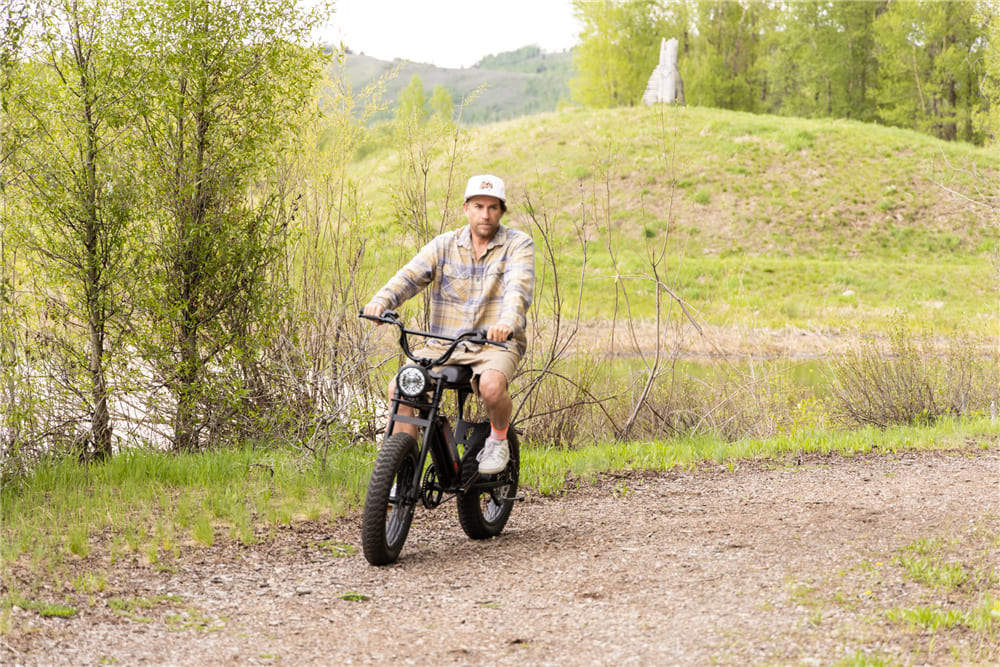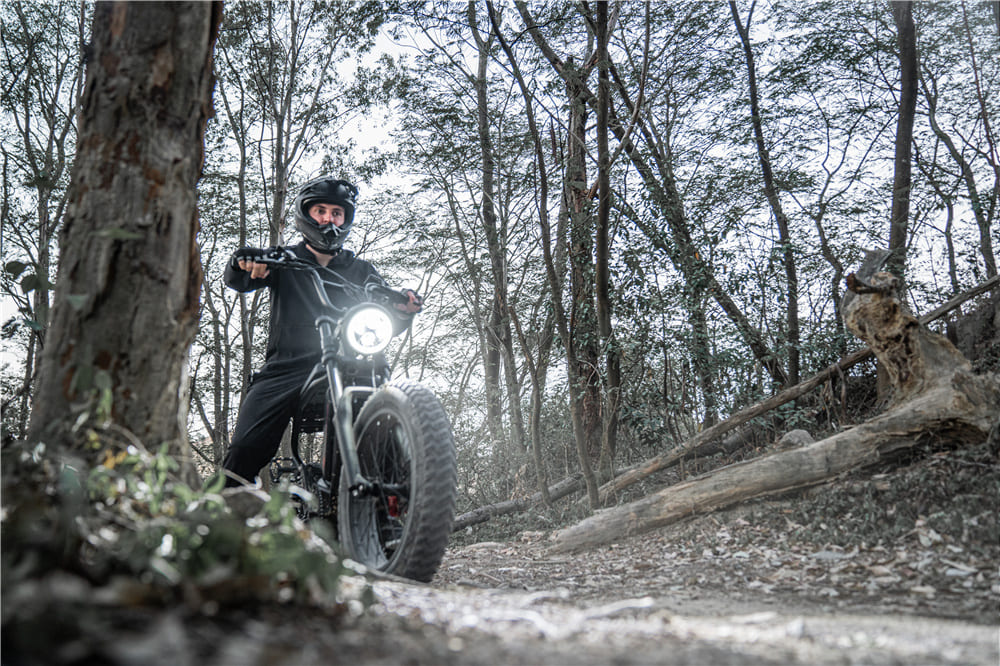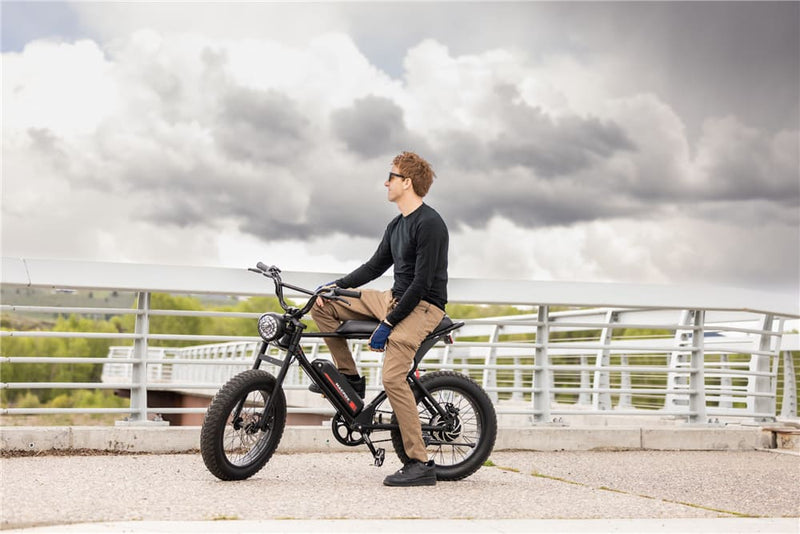Electric bikes, a revolutionary blend of traditional cycling and cutting-edge electric technology, have swiftly captured the transportation spotlight. Their multi-faceted appeal spans from their eco-friendly nature to their efficiency in navigating diverse terrains. As more consumers gravitate towards these bicycles, understanding the nuances of their features, especially water resistance, becomes paramount. After all, a sudden downpour can turn from a mere inconvenience to a potential hazard if the electric bike's design cannot handle the wetness.
Contents []
- 1.Understanding IP Ratings
- 2.The Evolution of E-bike Technology and Water Resistance
- 3.Why Water Resistance Matters
- 4.Factors Affecting Water Resistance
- 5.Consumer Expectations and Market Demand
- 6.Choosing the Right Bike
- 7.Taking Precautions
- 8.Environmental Considerations and Sustainability
- 9.The Future of Water-Resistant Electric Bikes
- 10.Conclusion
- 11.FAQs
- 12.We recommend for you
Understanding IP Ratings
The Ingress Protection (IP) Rating stands as a universal standard, often cited when describing the water resistance of electrical devices, including e-bikes. But what exactly does it entail? In its simplest form, an IP rating offers insights into the resilience of a gadget against external factors, primarily solids like dust and liquids like water. The rating usually comprises two numbers; the first corresponds to solid protection and the second to liquid protection. For instance, an IP67-rated device would be completely dust-tight and can be submerged in up to 1 meter of water for 30 minutes without detrimental effects. So, when evaluating the water resistance of electric bikes, IP ratings serve as a reliable reference point, with higher ratings indicating superior water resistance. However, it's essential to balance this technical knowledge with real-world applications, as certain conditions may vary.The waterproof rating of Macfox electric bicycles is level 4.

The Evolution of E-bike Technology and Water Resistance
Over the past few decades, the transportation industry has witnessed an unprecedented evolution, with electric bikes emerging as a frontrunner in sustainable travel. Originally, e-bikes were merely traditional bicycles with a basic electric motor attached, offering minimal assistance to the rider. However, as technology advanced, so did the complexity and capability of these machines. E-bikes transitioned from simple pedal assist devices to intricate machines with multiple modes, advanced battery technology, and enhanced user interfaces.
One constant challenge during this evolution was ensuring these bikes could withstand nature's elements, especially water. Early e-bikes lacked the robust water resistance we see today. Exposure to even light rain could lead to malfunctioning components, rendering the e-bike useless. The industry quickly realized that for e-bikes to be a viable transportation option, they needed to withstand diverse weather conditions.
Manufacturers began to explore and integrate advanced materials and design techniques. Special coatings were developed to repel water from vital components. Internally, advancements in sealing technology ensured that water couldn't infiltrate the critical electronic systems. Every iteration of e-bikes saw an improvement in water resistance, reflecting in the steadily increasing IP ratings over the years. Today's top-tier e-bikes are a testament to this journey, offering riders the freedom to venture out without the constant worry of water damage.
Why Water Resistance Matters
Imagine taking a leisurely ride on your new Macfox ebike. The sky, although overcast with clouds, did not look menacing. However, midway through your journey, heaven decides to open up and you're caught in a downpour. This is where the water resistance of an e-bike becomes critical. The nature of electric bike waterproofing extends to several important components:
- Battery: This is the lifeblood of the e-bike. Ensuring its protection means preserving the bike's power source, especially since water damage can lead to severe battery complications or even render it unusable.
- Motor: As the driving force behind the e-bike, the motor's consistent performance is crucial. A water-resistant motor ensures optimal functionality even amidst damp conditions.
- Controller & Display: These act as the user's primary interface with the e-bike. Any water damage could lead to malfunctioning controls or a distorted display.
Factors Affecting Water Resistance
Delving deeper into the intricacies of electric bike design, several pivotal factors contribute to its overall water resistance:
- Material: The foundational materials play a decisive role. Rust-resistant choices like aluminum or stainless steel naturally offer a higher degree of water protection than their counterparts.
- Design: An electric bike crafted with an emphasis on protecting its components—like enclosed casings, minimal exposed wiring, and impeccable watertight seals—stands a better chance against rain and water splashes.
- Maintenance: Like any machinery, e-bikes also wear out. Regular maintenance ensures that minor issues, which might escalate and compromise water resistance, are nipped in the bud.
Related Reading: Dispelling the Myth Are E-Bikes Really 'Cheating'
Consumer Expectations and Market Demand
While technical advancements significantly influence the e-bike industry's direction, consumer expectations and market demands also play a pivotal role. As the popularity of electric bikes surged, consumers began to voice their needs more vocally. They demanded bikes that could match their adventurous spirits, bikes that wouldn't back down from a little rain or a muddy trail. The market demand shifted from just electric assistance to durability and robustness in all conditions.
Manufacturers and brands took note. E-bike designs started prioritizing not just speed or battery life but also resilience against the elements. Large-scale surveys and feedback loops were established to understand riders' pain points. Brands invested in research and development to address these challenges head-on. As a result, the modern e-bike is a culmination of these efforts. It not only meets but often exceeds consumer expectations, balancing performance with durability.
Furthermore, the aftermarket for e-bikes began to flourish. Protective covers, water-resistant carry bags, and specialized cleaning solutions entered the market, catering to the riders' needs. The synergy between consumers and manufacturers has thus shaped the e-bike industry, ensuring that water resistance remains at the forefront of design and innovation.
Choosing the Right Bike
While many e-bikes boast of superior features, water resistance remains a key consideration. For prospective buyers, several avenues can guide their decision:
- IP Ratings: Undoubtedly, bikes with impressive IP ratings for water resistance will be more reliable during unexpected showers.
- Brands & Reputation: Not all e-bikes are created equal. Established brands often have stringent testing standards, ensuring their products consistently meet or exceed expectations.
- User Experiences: Real-world reviews from fellow riders can be enlightening. They offer insights, both positive and negative, about how a particular e-bike model holds up against wet conditions.
Taking Precautions
Water resistance, however impressive, is not a blanket permission for recklessness. Users should:
- Evade Submersion: No matter the rating, directly submerging an e-bike is a bad idea. While some components might endure, prolonged exposure can lead to irreversible damage.
- Post-Rain Care: If your bike gets wet, it's best to wash and dry it first. This simple action can extend the life of your e-bike and maintain its performance.
- Strategic Storage: When dormant, store the e-bike in dry, cool places, away from direct exposure to rain or moisture.
Environmental Considerations and Sustainability
The global push towards sustainability and eco-friendly solutions has been a significant driver for e-bikes. However, this push goes beyond just reducing carbon emissions. A truly sustainable product is durable, requiring fewer replacements and resulting in less waste. This philosophy extends to the realm of e-bikes, where longevity becomes a key metric. A water-damaged e-bike not only inconveniences the rider but also contributes to electronic waste, which is a growing environmental concern.
By investing in water resistance, manufacturers are directly promoting sustainability. A longer-lasting e-bike means fewer resources spent on repairs and replacements. This not only conserves materials but also reduces the energy expenditure associated with manufacturing processes. Moreover, consumers can confidently invest in e-bikes, knowing that their choice supports a greener and more sustainable future.
This sustainability angle also opens doors for new marketing and branding opportunities. Brands that emphasize their commitment to the environment can resonate more deeply with a generation that values eco-conscious decisions. Thus, water resistance, while primarily a technical feature, also becomes a cornerstone of sustainable and environmentally-friendly transportation.
The Future of Water-Resistant Electric Bikes
As technology gallops forward, the realm of electric bikes is bound to witness even more advancements. Future models might incorporate materials hitherto unseen in the industry or integrate designs inspired by other water-resistant technologies. The emphasis on enhanced water resistance is clear: to make electric bikes not only more durable but also versatile across weather conditions, ensuring that riders can rely on their e-bikes come rain or shine.

Conclusion
Water resistance in electric bikes is more than just a feature—it's a commitment to durability, safety, and performance. Armed with knowledge about IP ratings, key components, and maintenance needs, riders can navigate their choices and their journeys with greater confidence. As technology advances and the e-bike industry evolves, water resistance will remain a focal point, ensuring rides remain not just exhilarating but also safe.
FAQs
Q1: What do the numbers in an IP rating signify?
Each number in an IP rating denotes a specific level of protection. The first indicates protection against solids, while the second represents protection against liquids.
Q2: Is it safe to wash my e-bike with water?
While light cleaning with a damp cloth is acceptable, direct water jets or submersion can harm the e-bike's components, even if it's water-resistant.
Q3: Do higher IP ratings mean the e-bike is completely waterproof?
No IP rating guarantees complete waterproofing. Higher ratings indicate better protection, but it's always best to avoid direct water exposure.

















